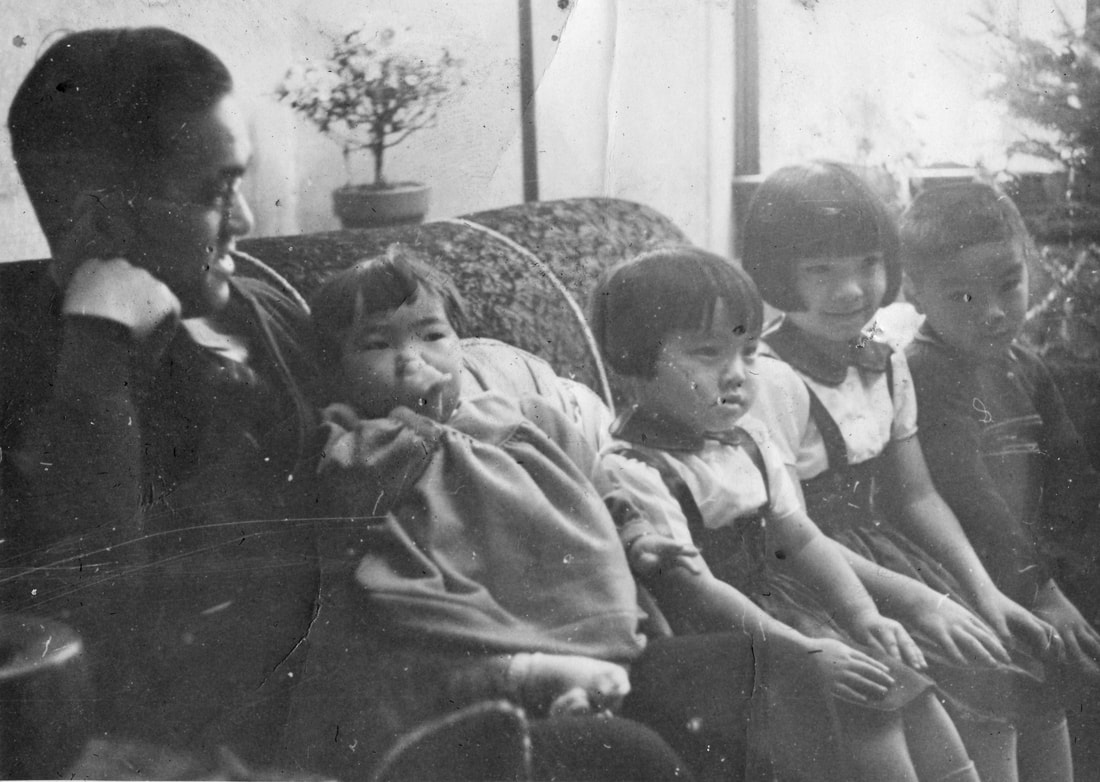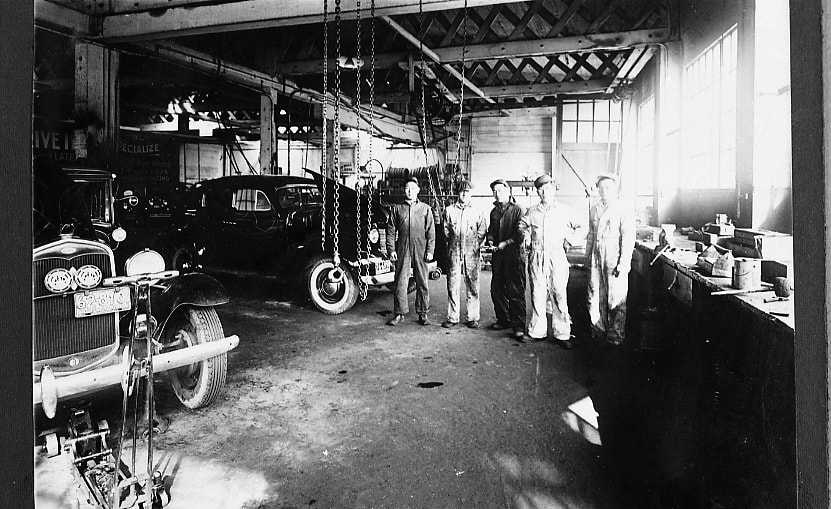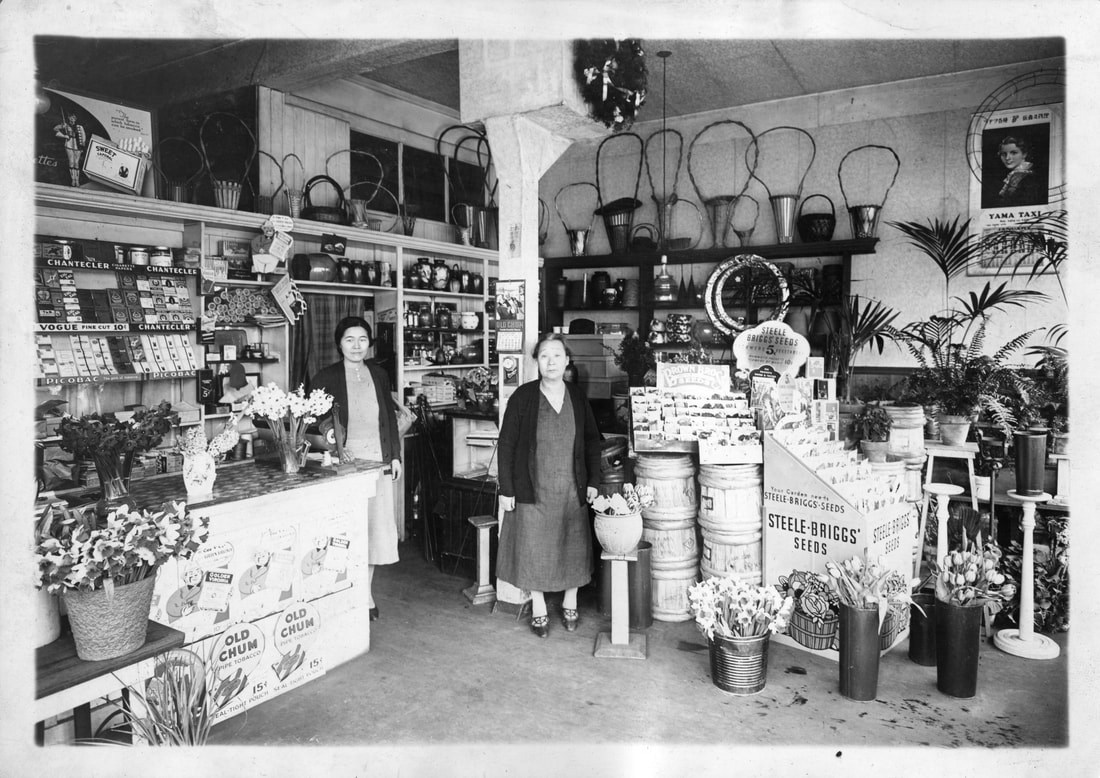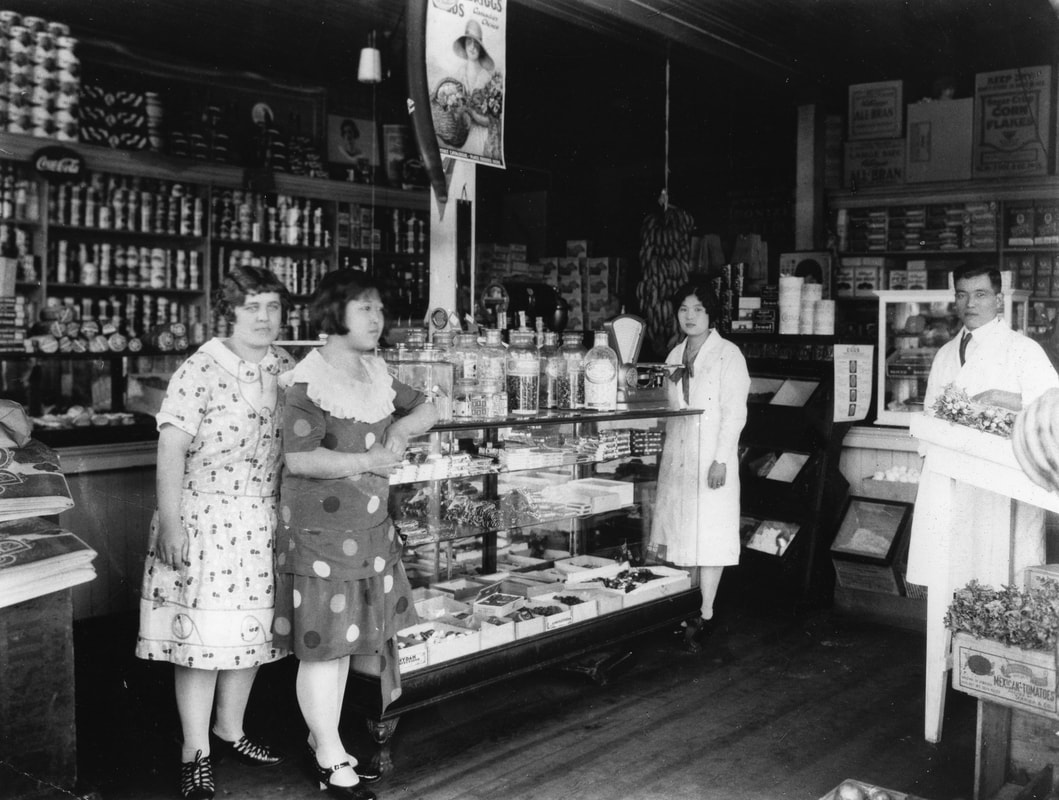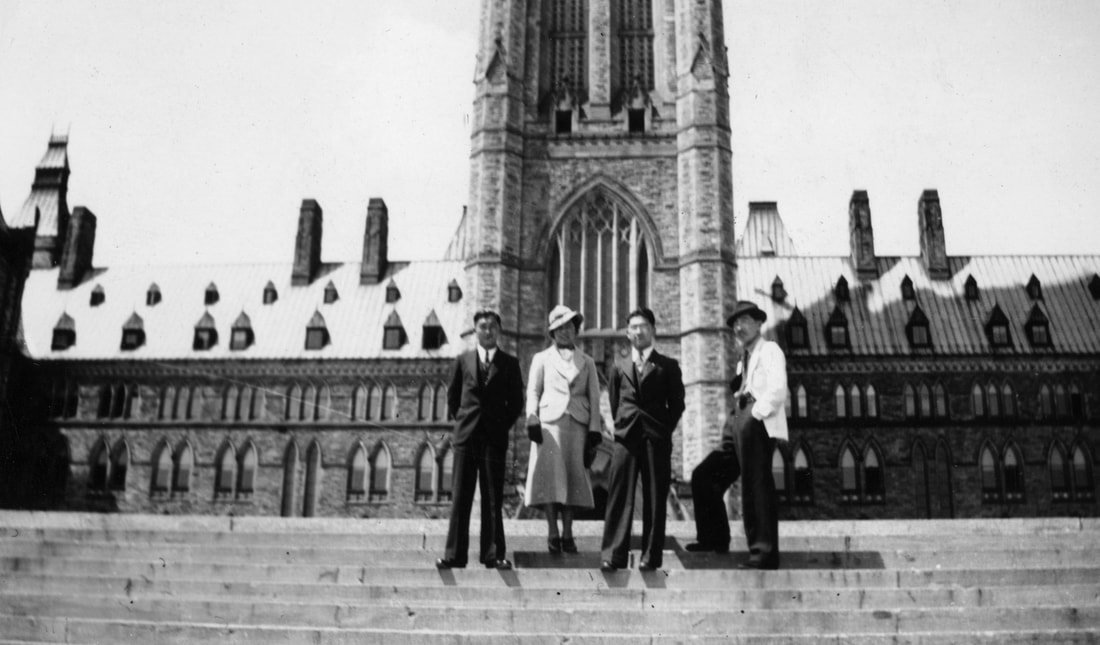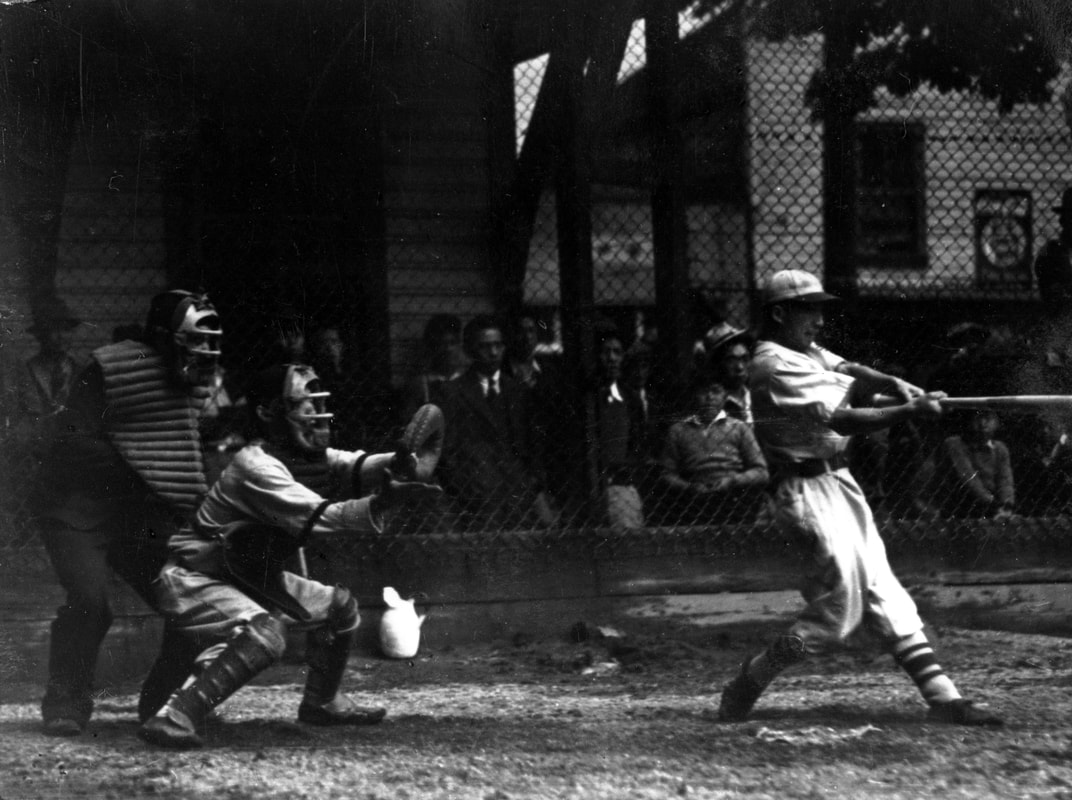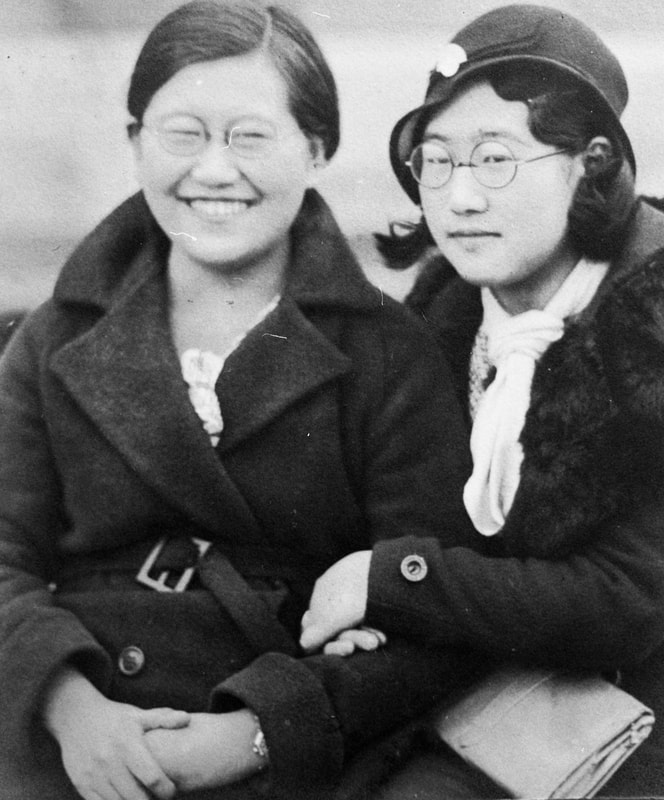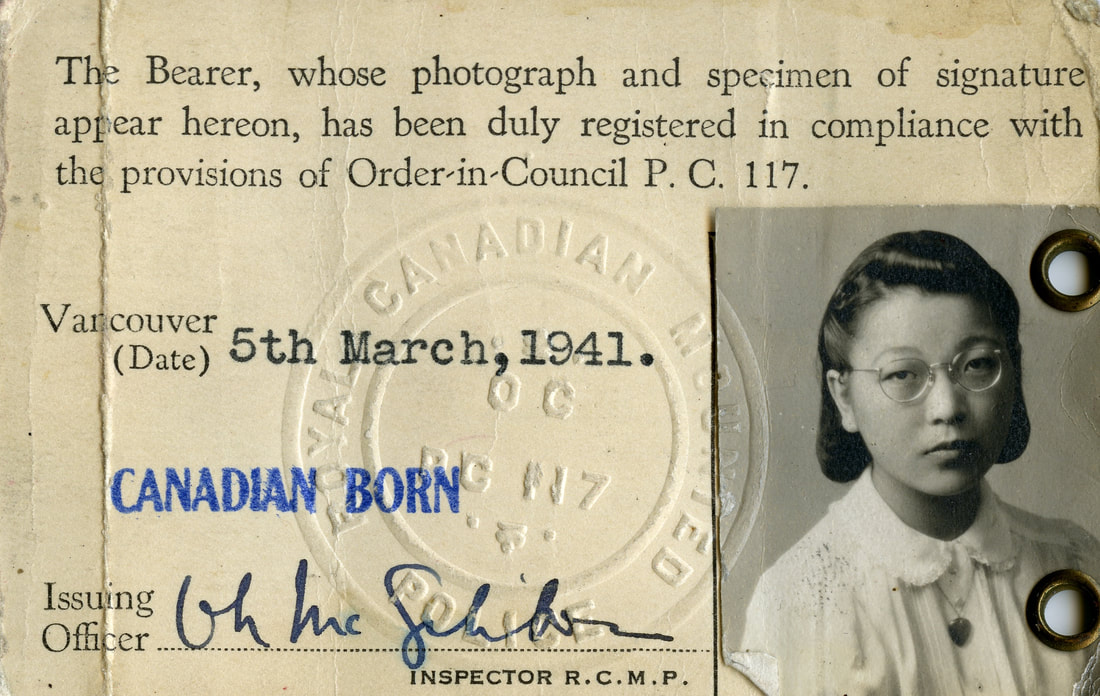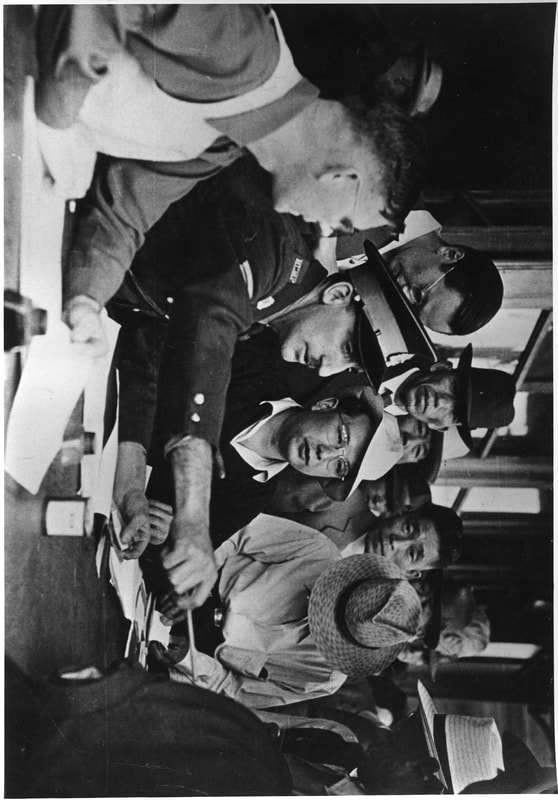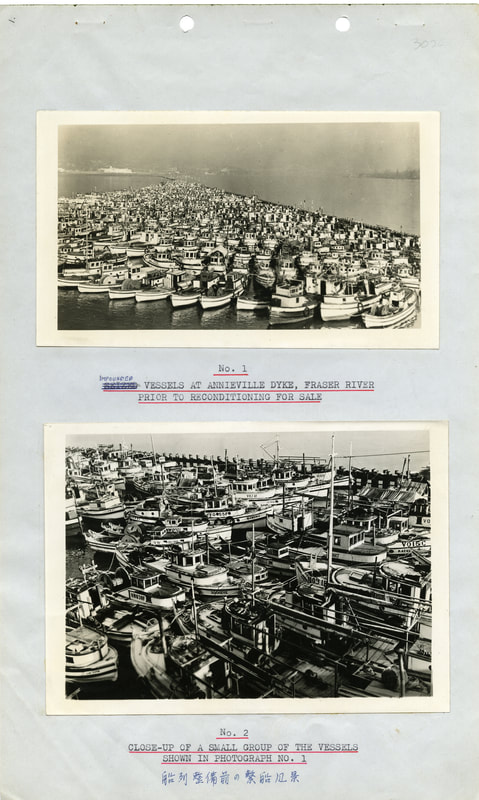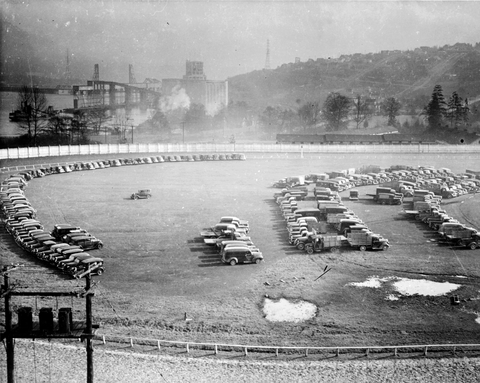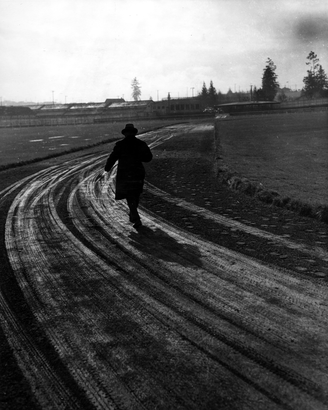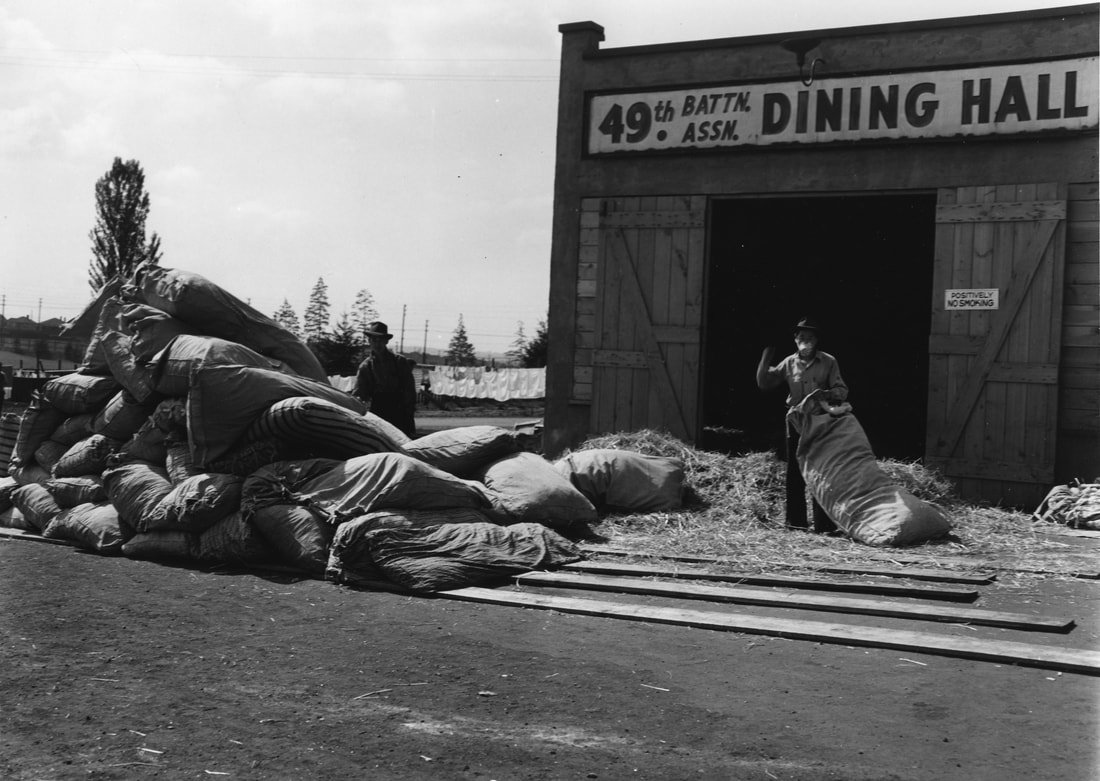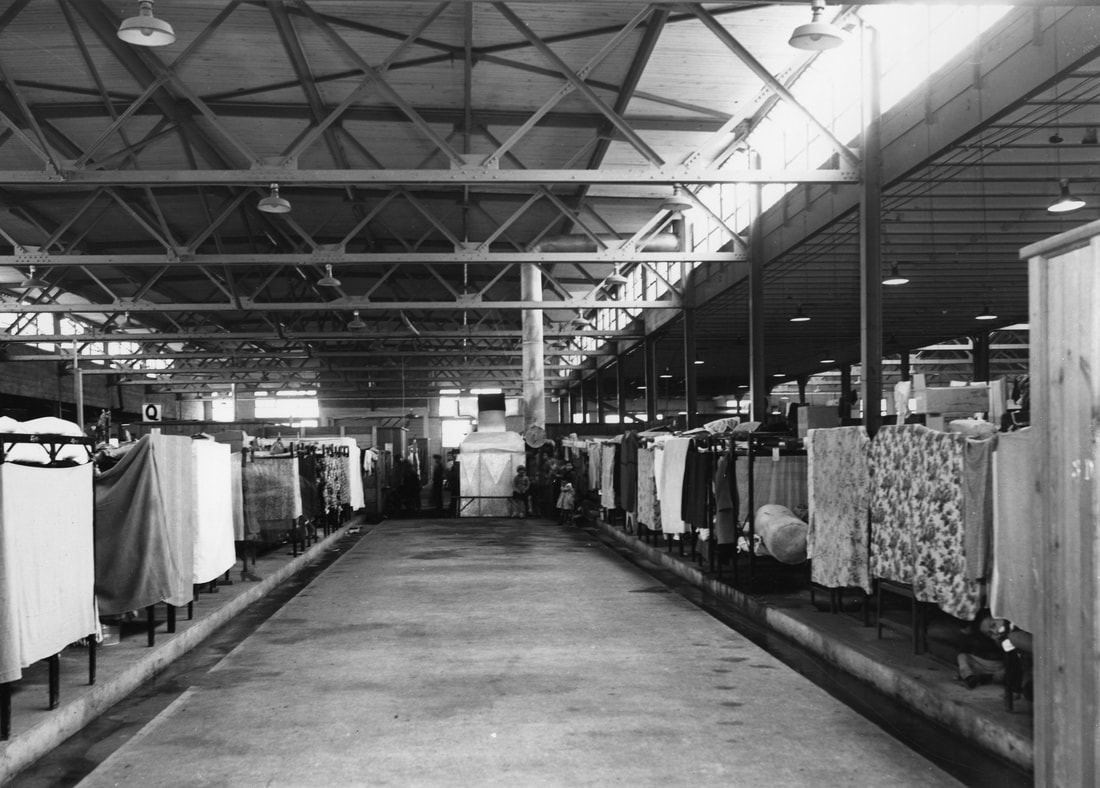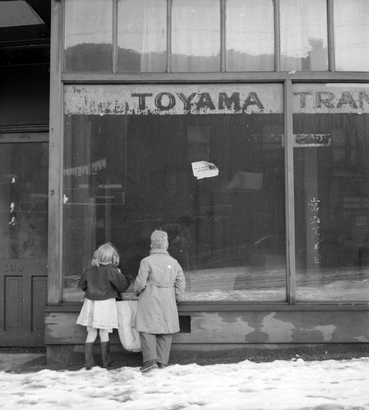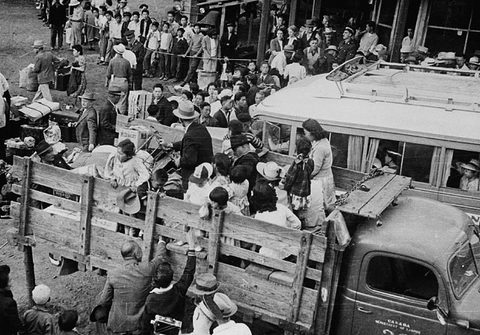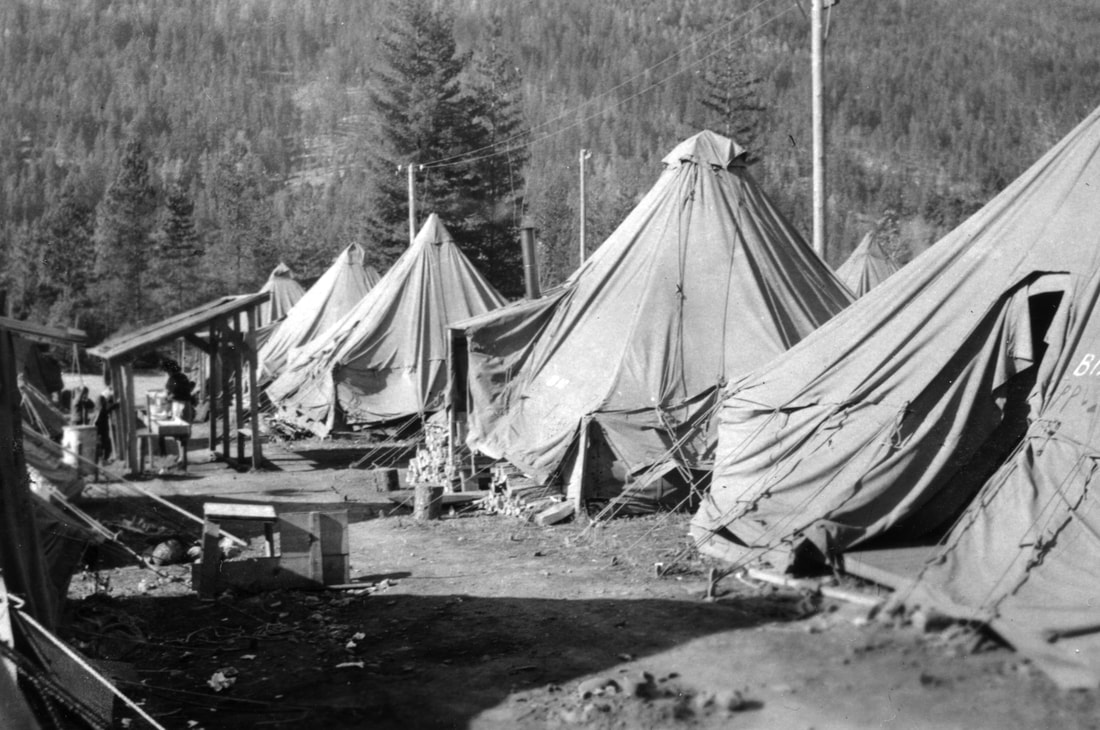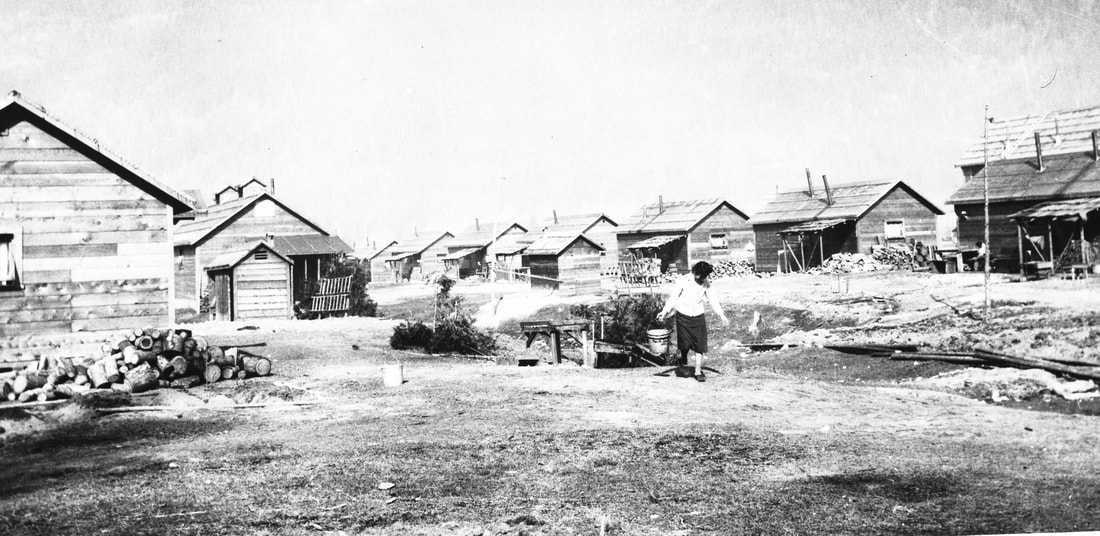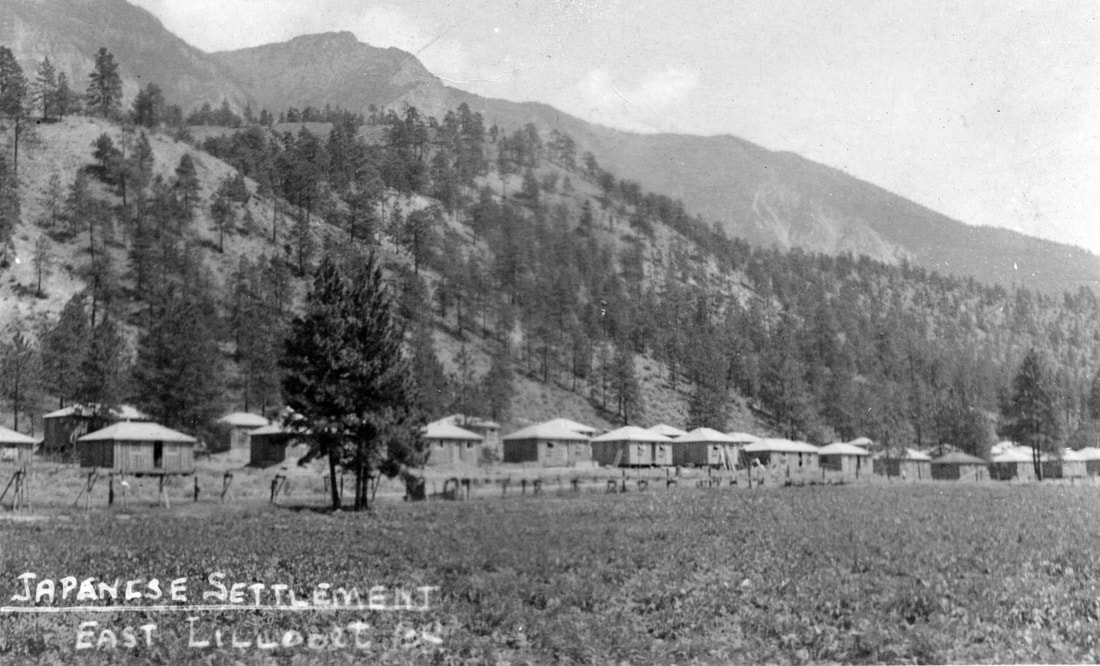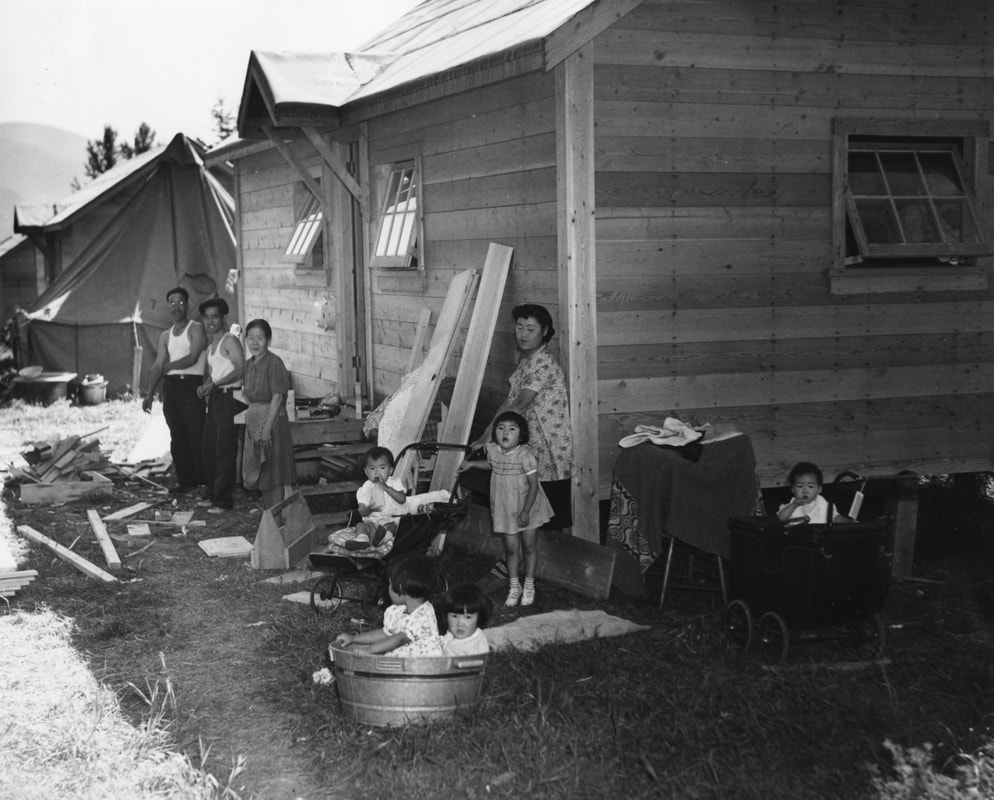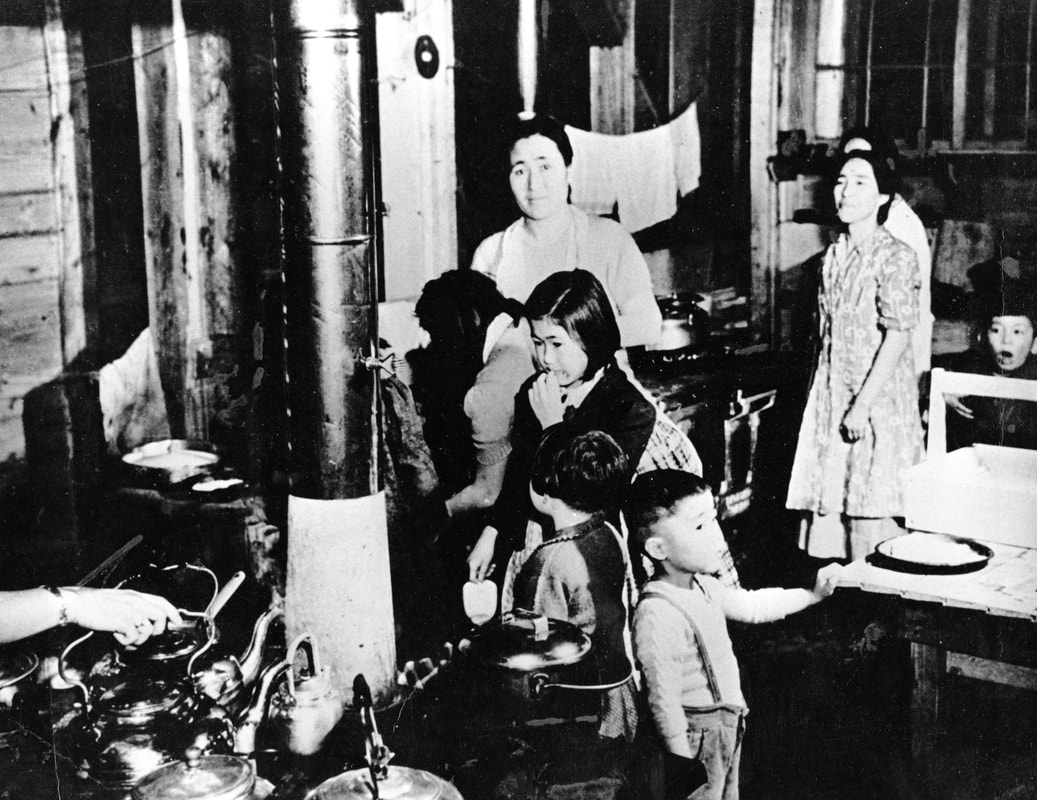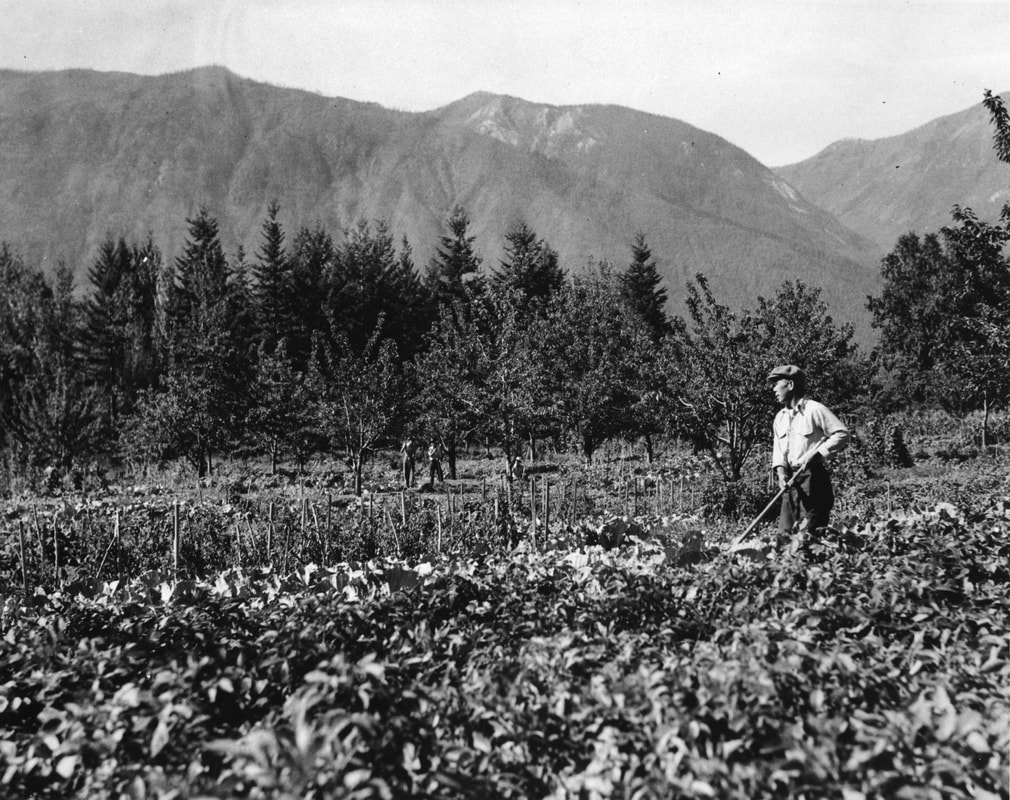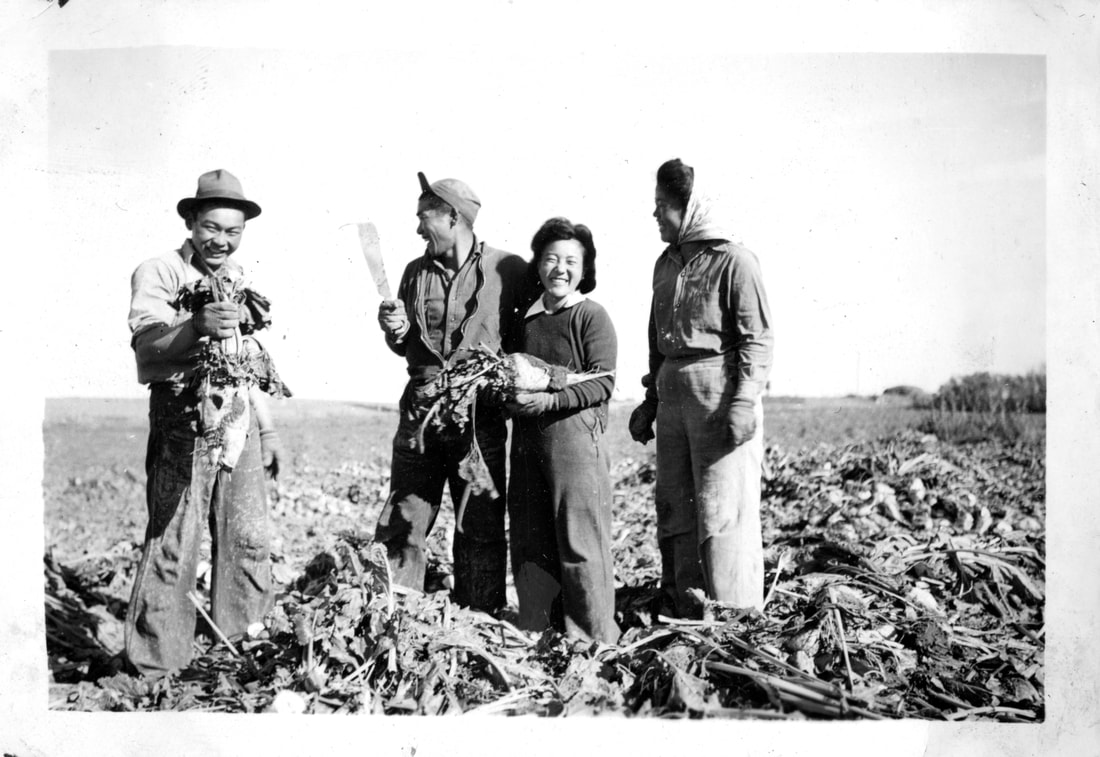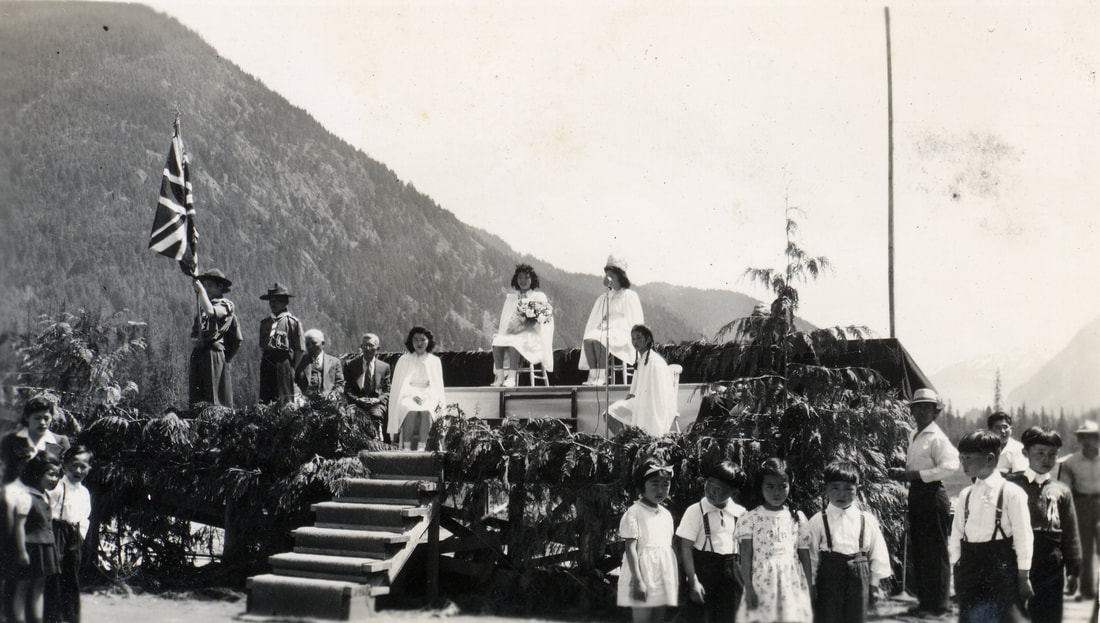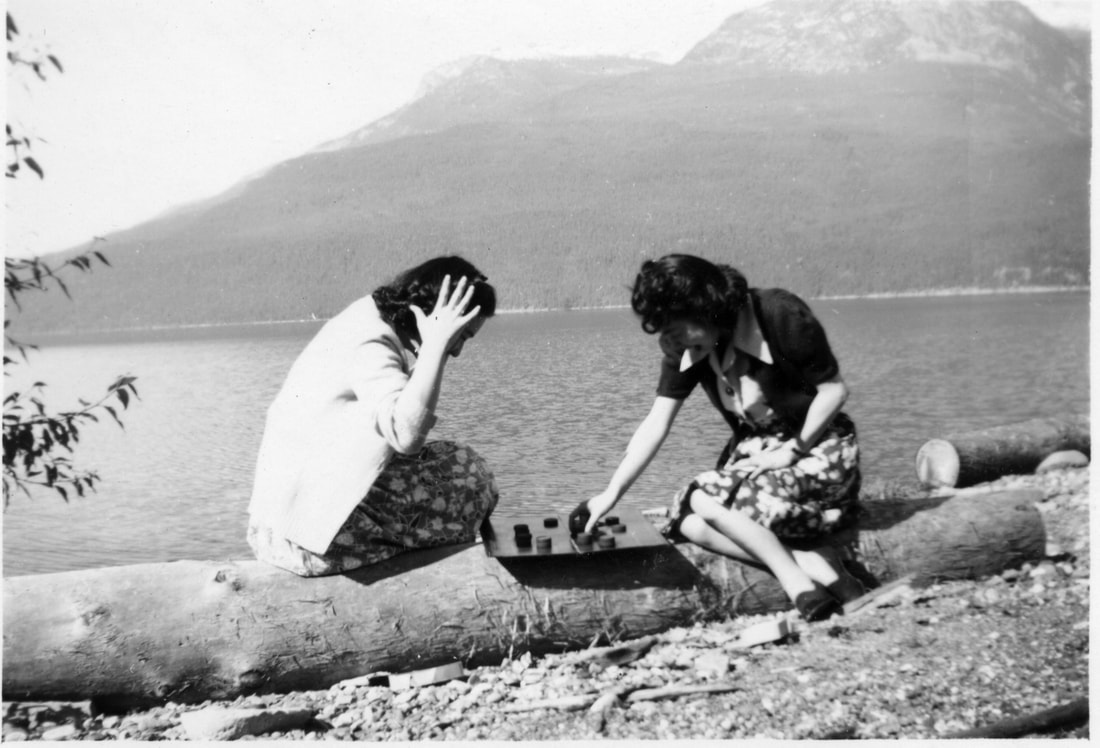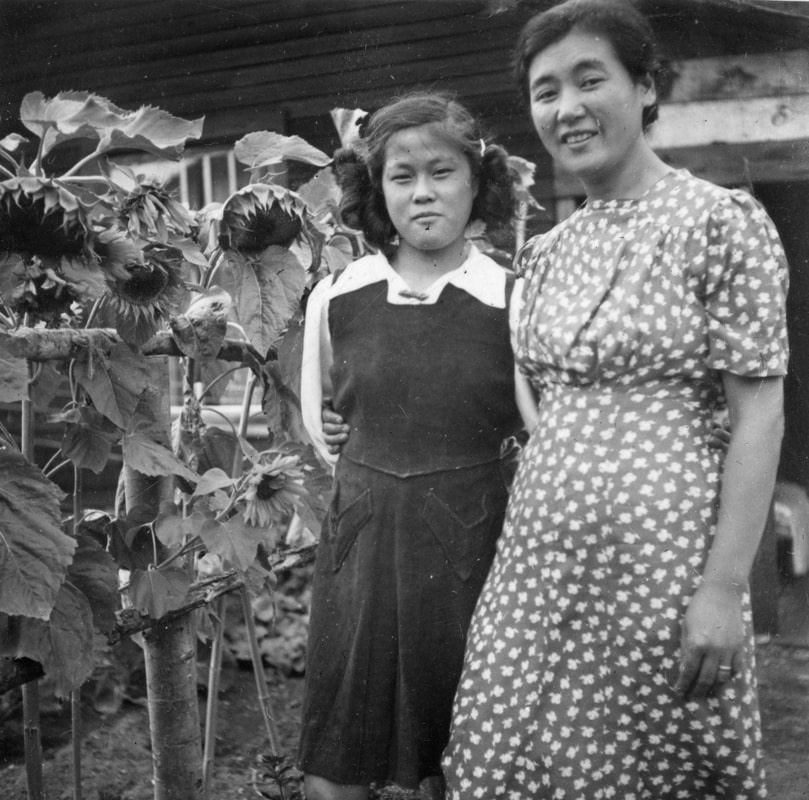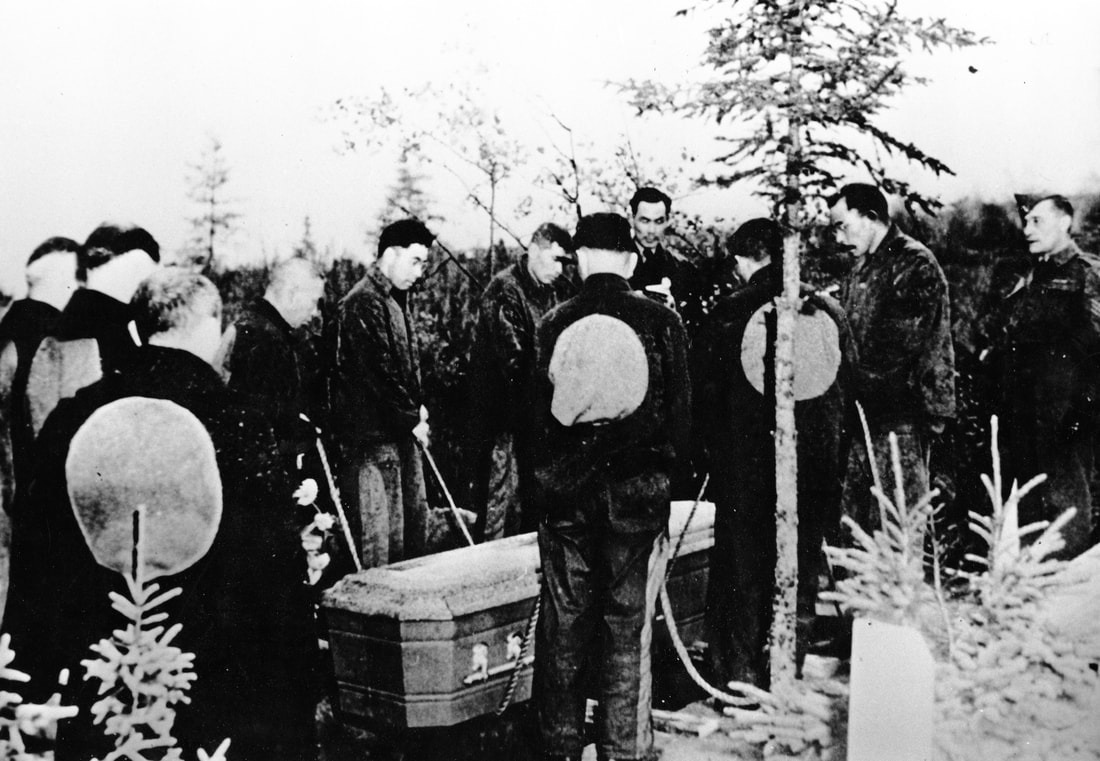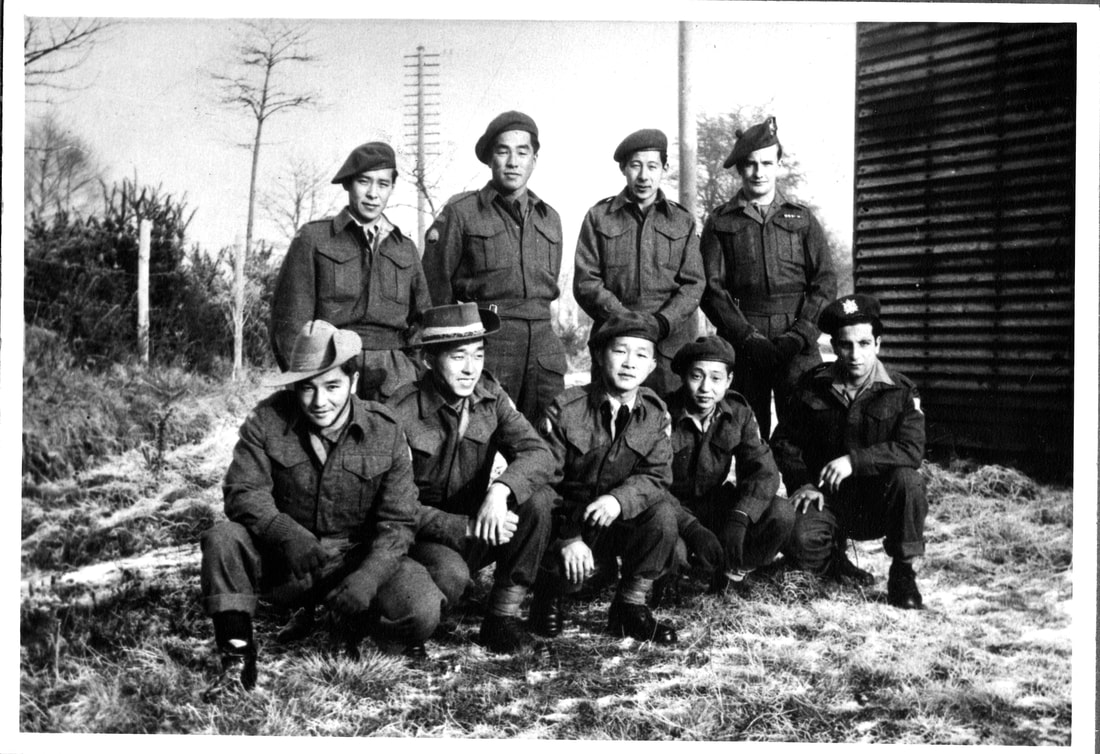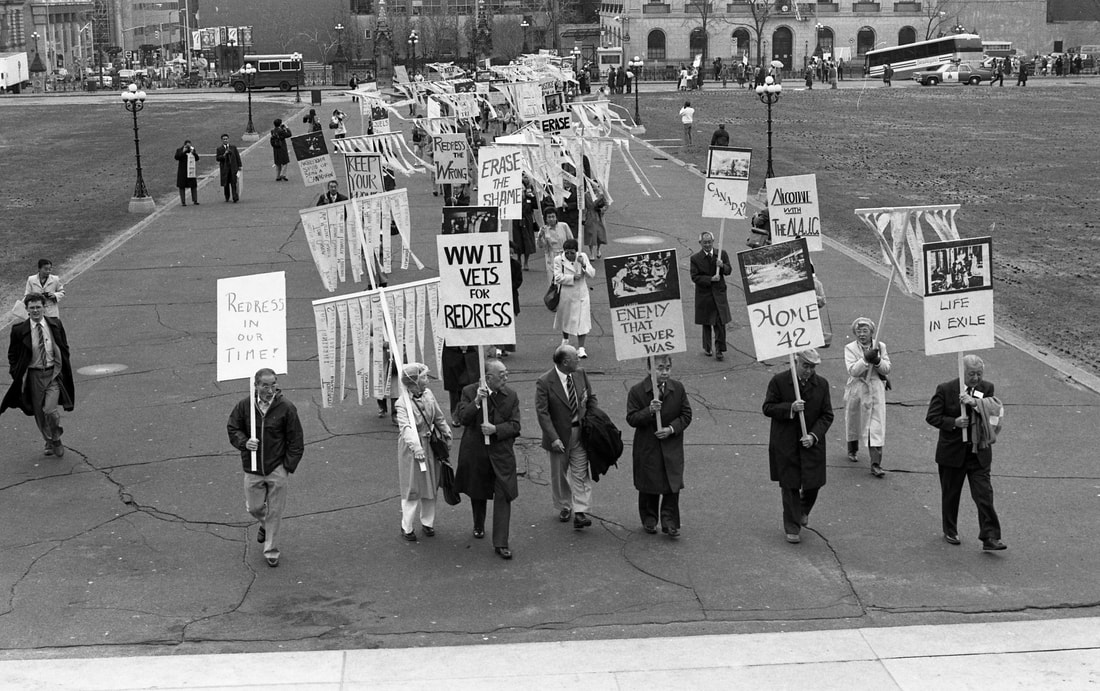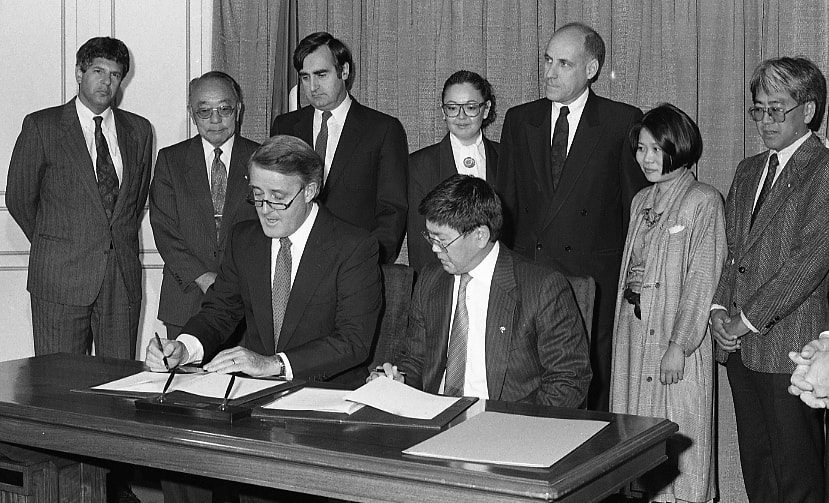1939-1952
Photo Gallery 1930–1988
 Scroll down
Scroll down
Part 1. 1930 to 1944
Introduction to Internment
Photo Information
Keep hidden from students
- Morishita: A Portrait of the Morishita Family in their Living Room on Cordova Street, Vancouver, BC, 1939 [Many precious belongings, furniture, pianos, sewing machines, household goods, and heirlooms were confiscated and auctioned off at bargain-basement prices by the Canadian government.]
- Maikawa: Men working in Maikawa Nippon Auto Supplies, 298 Alexander Street, Vancouver, BC, 1934
- Nakamura florist: Kimiko and Riye Nakamura Posing in the Nakamura Florist shop on Powell Street, Vancouver, BC. An example of a business that was confiscated and sold without the owner’s consent while Japanese Canadians were in internment camps. The Powell Street area in Vancouver was one of the prewar communities where Japanese Canadian people gathered for social and economic reasons.
- Maple Leaf Grocery; Vancouver, BC, 1930
- Delegation: Samuel I. Hayakawa, Minoru Kobayashi, Hide (Hyodo) Shimizu, Edward Banno (Japanese Canadian Citizens’ League delegation), Ottawa, Ontario. Delegation in Ottawa seeking the right to vote for Japanese Canadians.
- Asahi: Asahi Baseball Player at the Ball. This popular and successful all-Japanese Canadian team played at Oppenheimer Park on Powell Street.
- Mitsui: A Portrait of May and Mitsui, Vancouver?, BC, 1930
- ID: Registration card. Everyone of Japanese Ancestry over 16 years of age was fingerprinted and photographed and had to carry an identity card to be shown on demand.
- RCMP: An RCMP Officer and Japanese Canadians During Uprooting in 1942.
- Annieville: Fishing boats seized by the federal government in 1941. Within 48 hours of the bombing of Pearl Harbor on December 7, 1941, some 1,200 fishing vessels owned by Japanese Canadians were seized and impounded. Japanese Canadian fishermen were stripped of their property, their independence, and their means of livelihood. They could not support their families. Many had their boats damaged and their gear stolen. [In January 1942, these boats, supposedly held in trust for interned Japanese Canadians, were sold to non-Japanese fisherman. The prices the Japanese Canadian fishermen received for their boats and gear were much less than the appraised value].
- Cars: Motor Vehicles impounded by the Government of Canada and stored at Hastings Park in Vancouver, 1942. Cars, trucks, and farm vehicles were “held in trust” [but were later sold at bargain prices by the Custodian of Enemy Property without owners’ consent.
- Walking: Japanese Canadian man walks off after leaving his cars with RCMP officers at Hastings Park, 1942. Cameras and radios were also confiscated.
- Straw: Army stuffing bags with straw to be used as mattresses by Japanese Canadians, 1942. The PNE buildings in Hastings Park, Vancouver, were used to house those who were arriving from places along the west coast and Vancouver Island. From Hastings Park, people were shipped out to internment camps.
- Forum: The men’s dormitory was the Forum at Hastings Park, in what is now the PNE in Vancouver. Some families were given as little as 24 hours to leave their homes. Families were separated: men from women and children. Meals were eaten in a segregated mess hall. Some were forced to stay for months without knowing where they would be sent nor what had happened to their relatives and friends.
- Livestock: Women’s dormitory at Hastings Park, 1942, in what is now the PNE. Women and children were forced to live in horse stalls in the Livestock Buildings. Sheets and blankets were used to create some privacy. The stench from the animals that had occupied the stalls just days before their arrival made many feel ill.
- Empty: Toyama Trading, 1942. Japanese Canadian businesses, farms, and fishing operations were closed and confiscated by the Government of Canada.
Part 2. 1945 to 1949
Going to Internment and Living in Internment
Photo Information
- Truck: Trucks and trains were used to ship Japanese Canadians to internment camps. The RCMP directed the loading. Women, children, and the elderly were separated from their husbands and fathers who were sent to work on road camps near the Rockies on the BC/Alberta border.
- Slocan: Families lived in tents while waiting for shacks to be built.
- Lemon Creek: Mrs. Take Akiyama carrying water in Lemon Creek, BC, an internment camp, 1943.
- Japanese “settlement,” East Kootenays.
- Family in front of an internment shack. In many internment camps, laundry was done in community washrooms at a designated time. There were cold water taps only. Hot water had to be heated on the stove in the communal kitchen and carried to the tubs. Also outside were the outhouses with their pungent odour of lime.
- Tashme, BC: Families sharing a kitchen. Each shack had two or three families living together. All other facilities were shared by many families. Cooking utensils included large pots for cooking rice and kettles to boil water for tea and to do the laundry. Tableware would include Japanese-style teacups and chopsticks along with western-style forks, spoons, and knives.
- Kaslo: Families supplemented their diets with homegrown vegetables.
- Fumi Tamagi and three others picking sugar beets, Shaughnessy?, AB, 1943. Many families chose to go to work as labourers in southern Alberta instead of being interned. The living conditions were poor, but moving to Alberta meant that families could stay together.
- Outdoor photography of the presentation of the 1944 May Queen and Court; Tashme, BC. Even in internment, Japanese Canadian families tried to keep life as normal as possible, including continuing with celebrations and festivals.
- Two young women playing checkers at Slocan Lake.
- Emi and Matsu Furakawa, Minto, BC, 1942. Families tried to supplement their diet with fresh vegetables. Traditional Japanese food was not available except for rice which was shipped from Texas. Shoyu (soya sauce) and tofu (bean cake) were made in some camps and distributed to other camps. Most camp stores stocked only dry food products and canned goods. Steamed rice, wieners with soya sauce, and vegetables from the garden made up a meal for many internees.
- Nuns with children, 1944. In some internment camps, children attended classes held by Roman Catholic nuns. The local public schools would not accept Japanese Canadian students. In Lillooet, parents built their own school. High school students completed their schooling through correspondence. Parents had to pay $9 per course or $56 per year per student. This was a lot of money when a family earned $54 a month to pay for food and clothing.
- Burial of Masano Shirakawa at Angler, Prisoner-of-War camp in Ontario, 1942. All internees who disobeyed in any way were sent to Angler. Reasons for confinement included not having a travel permit, disobeying the curfew, or resisting the order to leave the West Coast. All prisoners wore a uniform with a red circle on its back so that they were an easy target for the guards; 700 Japanese Canadian men were confined.
- Canadian Nisei Veterans. Japanese Canadians were denied the right to fight for Canada in World War II. After the British army came to recruit them, the Canadian government allowed 150 nisei (ni-say), or second generation Japanese Canadians, to join the Canadian army. Many served as translators with the Canadian Intelligence Corps. During World War I, some Japanese Canadians enlisted to fight for Canada in an attempt to get the right to vote. Not until 1949 were all Japanese Canadians given the democratic right to vote.
Part 3. 1980s
Redress
Photo Information
- Japanese Canadian Redress Rally, Parliament Hill, Ottawa, ON, 1988. Institution: NNM
- Prime Minister Brian Mulroney and Art Miki, Parliament Hill, Ottawa, ON, 1988. Institution: NNM

